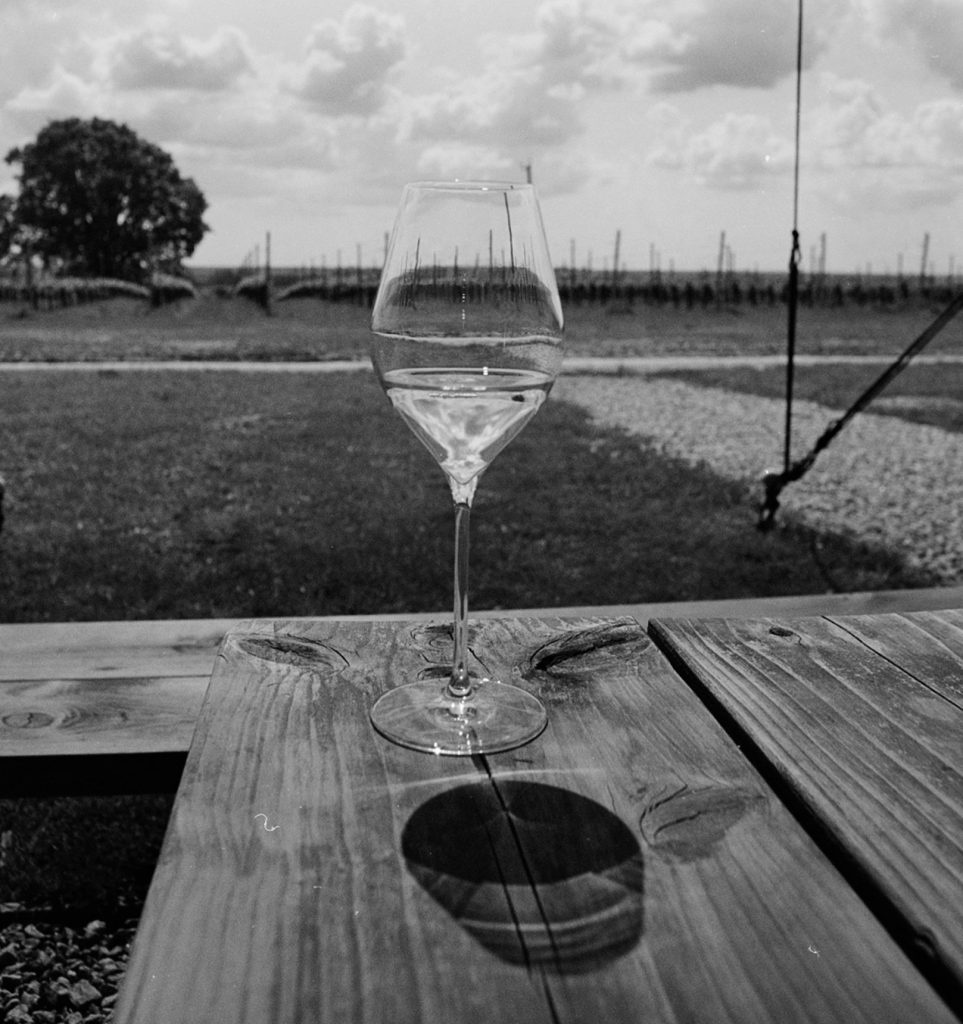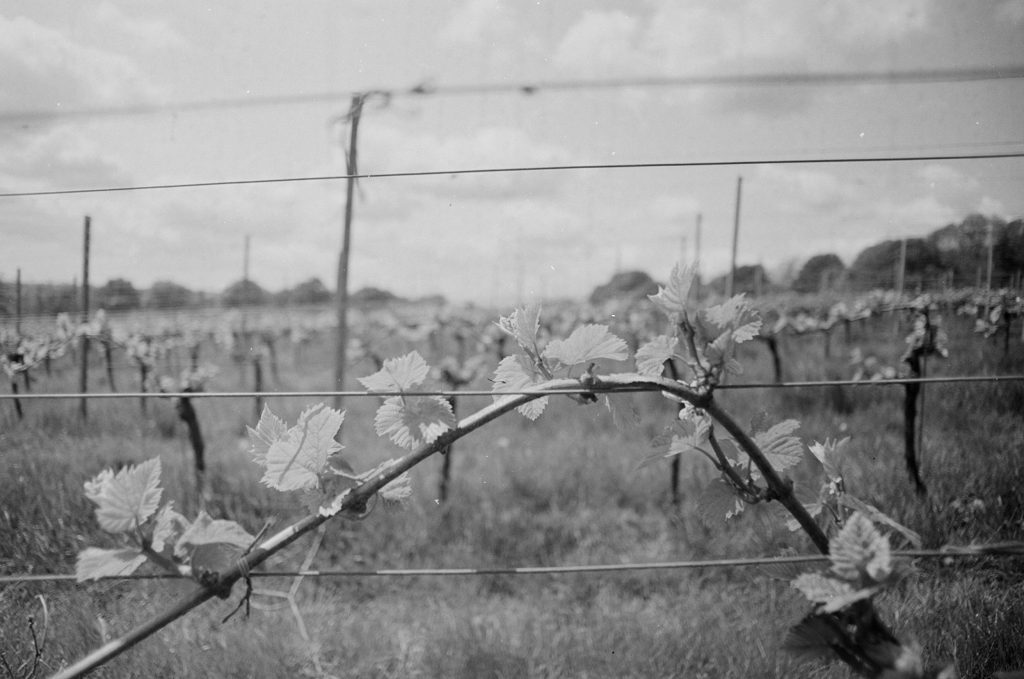Of Kentish tales and sparkling wines
Author: Issariya Morgan

We recently visited the vineyards of Gusbourne to meet old friends and taste new wines. In glorious spring sunshine, we delved into the estate’s storied past and discussed what the future might bring. Here, we take you behind the scenes at one of England’s most exciting fine wine producers.
We drive through quaint, red-bricked villages, down forested lanes rippling with sunshine and shadows. Our destination, Gusbourne, is folded into the Kentish countryside – not far from those places on the coast evocatively named Dungeness, Jury’s Gap and Winchelsea. Orchards, oysters, shingle beaches, hop fields – these are some of the things associated with the lush, bountiful region that encompasses Kent and Sussex. Increasingly, too, is wine.
Gusbourne has made a name for itself as one of the leading estates in the flourishing industry of English winemaking. Vineyards were planted here in 2004, on land that was once owned by one John de Goosebourne, way back in 1410.
Here, on ancient, storied land, the team make still and sparkling wines from the Champagne varieties: Chardonnay, Pinot Noir and Pinot Meunier. Today, their vintage-only expressions are regarded as some of the best in England, already holding up against many Champagnes. Temperate Kent stands to gain a lot, viticulturally, from the warming climate over the coming years – but for how long?
Tales of the land
In blazing sunshine, we’re guided between the vines by three wise men: Charlie Holland, winemaker and CEO; Jon Pollard, Vineyard Manager; and Jonathan White, Head of Marketing. They lead us through sites with names straight out of an old western, the likes of Boot Hill and Heartbreak (the latter, Jon tells us, reflecting the painstaking travails of growing Pinot Noir).
Soft wind blows through the vines, as talk turns to tales of the land. The Old Saxon Way, running through Kent, used to be a coastal path. Now, the ancient pilgrimage route cuts right through the vineyards. A great storm in the 12th century was supposedly so terrible that it changed the direction of the nearby River Rother, draining an area of floodplains which is now the Romney Marsh. One can only imagine how Biblical such an event must have seemed to the 12th-century locals.
Fast forward to the 20th century, and an ungodly event of another kind would befall the land, quite literally, in a shower of bombs. German soldiers would be court marshalled if they returned with any unused bombs, and Kent, the final outpost before the channel, was where they’d off-load their ammunition on their way home. Today, Gusbourne is a popular spot with local treasure hunters.
“A guy with a metal detector comes around,” Charlie tells us. “He’s brilliant. He finds all these musket balls, love coins, Neolithic flints. He writes us a long letter telling us what he’s found and where it all comes from. When you think that this piece of land has been farmed in one way or another for over 4,000 years, it makes you feel very small and insignificant. Like we’re custodians in a short window of time.”
Spring in the vineyard
We find ourselves here in a rather fruitful period of the land’s history, thankfully, albeit with our own modern storms to weather. Harvest labour has been a challenge since Brexit, but we’re assured that there are plenty of locals who return time and again – always a sociable affair. The last time I visited Gusbourne was during the harvest season, when the vines were heavy with full, ripe grapes and the air thrumming with activity and chit-chat. Our visit today comes in a gentler season: the flowers uncurling, the buds yet to burst, the vines rupturing with green life.

At the top of each row of vines, a rose bush has been planted: red for Pinot Noir, pink for Pinot Meunier, white for Chardonnay. Besides bringing beauty to the vineyard, they also serve an important traditional function: in the days when vineyards would be tended by horse and oxen, the rose thorns would stop the animal turning too quickly at the end of each row and taking out the last vine with the plough.
Gusbourne’s vines are not tended by horse or oxen, and the presence of roses is more a form of vineyard colour-coding. Nonetheless, Gusbourne is flourishing. Charlie happily tells us that Gusbourne’s wines are growing better with each vintage, with their still wines set to markedly rise in quality.
“It’s the direction of travel,” he says. “There are lots of bad things about climate change, but the good news is that we can get things to a riper level than we could 20 years ago. But we need to start rethinking things too. Champagne is struggling now, so we need to look ahead and think about what we’ll be doing in 30 years’ time. Because the climate is only going to change more quickly.”
Exquisite expressions
For now, at least, all the ingredients are in place for a range of delicious fine wines. Our first tasting is presented to us at the top of the vineyard, overlooking the vines. Gusbourne’s Boot Hill Blanc de Noirs is deliciously savoury yet fresh, with a hint of marmite and a lovely green-apple acidity. The Sussex Blanc de Noirs is a little peachier, with touches of flint and cream.
Our open-air tasting is promptly followed by lunch, served to us in The Nest – Gusbourne’s dedicated hosting space. Over a salad of giant couscous and grilled vegetables, served alongside sausage rolls, cheese and strawberries, we’re presented with a lovely “glass of sunshine”. Their bright, strawberry-fragranced English rosé is just the thing to complement a picnic-style lunch. We subsequently taste through a small flight of sparkling wines: crisp expressions, with notes of green apples and citrus, balanced by delicious touches of toast.
Finally, we come to Gusbourne’s crown jewel: Fifty One Degrees North. Their newly released prestige cuvée is exquisitely layered, like the strokes of a painting: bright citrus, orchard fruits, a touch of honey; rich and fleshy, yet still dancing, light on its feet. In 20 years, it will still be delightful. One can hope to be able to say the same.
Explore our range of Gusbourne’s wines here


